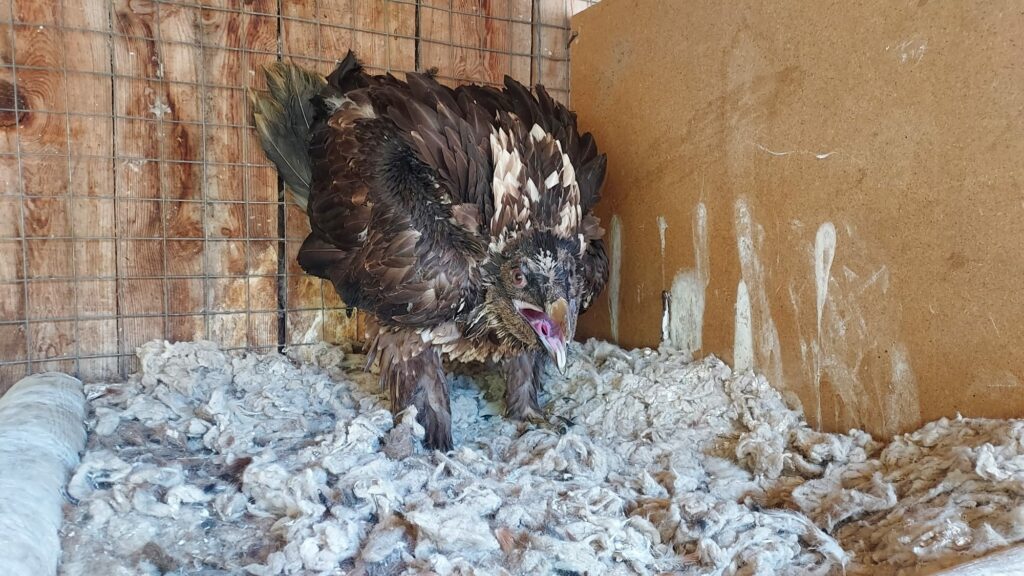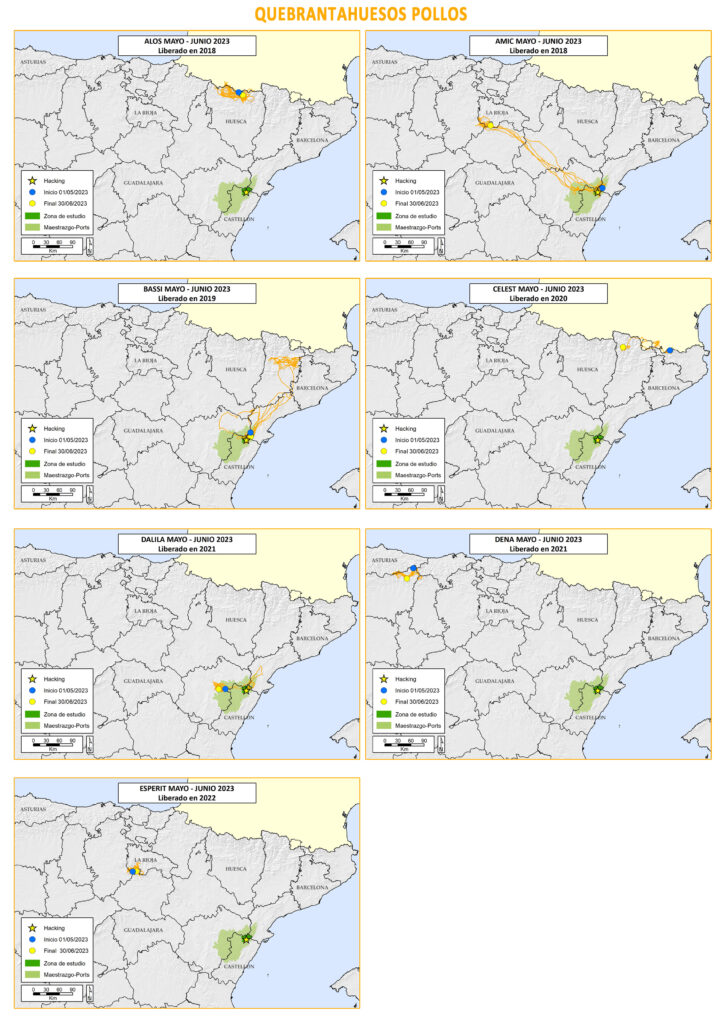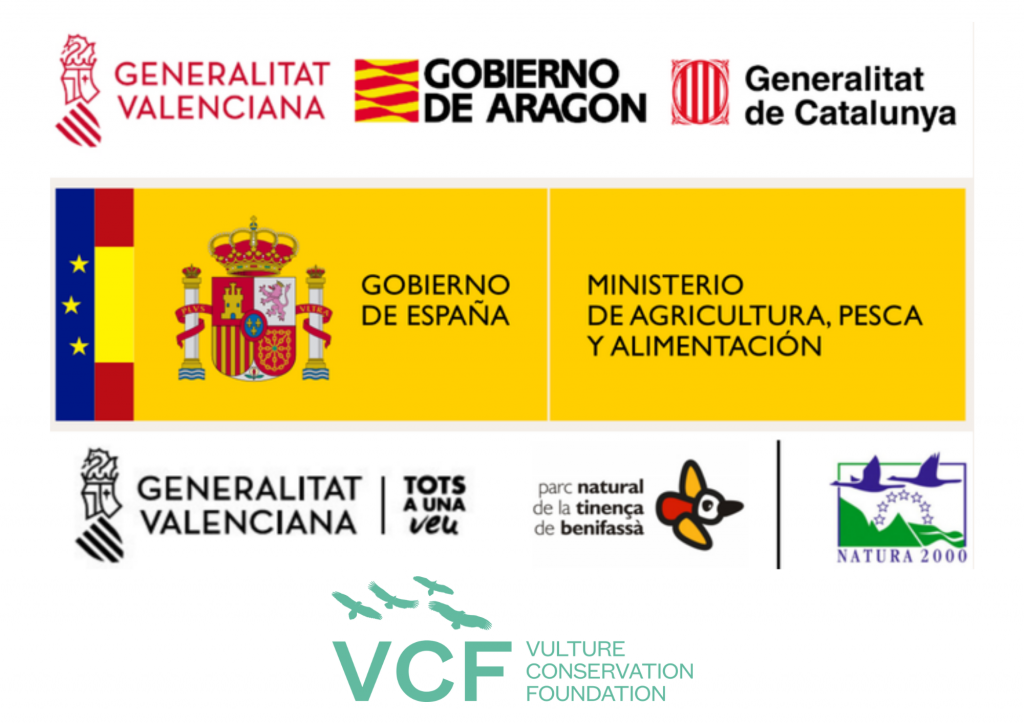The reintroduction project in Maestrazgo to establish a wild breeding population is making good progress. Since 2018, fourteen juvenile Bearded Vultures have been released, including three birds in June this year. The monitoring team has been following their movements thanks to the GPS transmitters they carry. Where are the Bearded Vultures released?

Three Bearded Vultures, released this year, took their first flight
In June, Flora, Farigola and Fredolic were released in Maestrazgo. The three juvenile Bearded Vultures (Gypaetus barbatus) hatched in captivity in Guadalentín (Spain) and Richard Faust (Austria) specialised breeding centres were taken to the hacking facilities in Parc Natural de la Tinença de Benifassà when they aged three months old. Still unable to fly, they spent the last few weeks getting used to their new home.
In the meantime, the three birds fledged and have been exploring the area surrounding the hacking, returning daily to feed. Slowly, they will start expanding their range and venture to longer journeys. As this release strategy mimics their natural way of fledging, the juveniles are expected to return to Maestrazgo once they reach sexual maturity, which may take 7-9 years.


Updates on the Bearded Vultures released in Maestrazgo
In their first years, Bearded Vultures often disperse from the region where they fledged and explore vast areas, sometimes thousands of km away. Of the eleven Bearded Vultures released between 2018-2022, unfortunately, three lost their lives: one collided with a power line, and two were attacked by Golden Eagles, a natural mortality cause for the species. A Bearded Vulture has lost its transmitter, but seven are still being followed.
In general, the Bearded Vultures released in the Valencian Community have moved northwards, a tendency observed several years around this time of the year, indicating a certain seasonality in their movements. We must wait until September-October to see if they return to Maestrazgo as in previous years. In the field, the local team maintains the normal function of feeding stations.
Where are the Bearded Vultures released in Maestrazgo?
Since Èsperit, a male released in 2022, left Maestrazgo, he has been exploring the Sierra de Cebollera near Burgos. Dalila, a female released in 2021, visited La Tinença but has been mainly in the Maestrazgo area of Teruel. Amic, one of the first males released in 2018, has seen La Tinença and Sierra de la Cebollera, just like Bassi, released in 2019. The male has paid several visits to La Tinença but also visited the Pyrenees and Boumort.
Alos, a male released in 2018 seems to have settled near Ordesa (Pyrenees), where he has been spending the last months. Celest, released in 2020, is also in the Pyrenees but moved from the Nature Park de las Cabeceras y der Freser to the nearby National Park Aigüestortes. Finally, Dena vastly explored northern Spain, visiting Picos de Europa National Park and Riaño mountain.

Bringing the Bearded Vulture back to Maestrazgo
The impressive mountains in Maestrazgo have historically been a breeding site for the Bearded Vulture. A reintroduction project started in 2018 to re-establish a wild breeding population to bridge the Andalusian and Pyrenean populations. A project that brings together us at the Vulture Conservation Foundation (VF), the Spanish Ministry for Ecological Transition, and the Regional Governments of Valencia, Aragon and Catalonia.
You can follow the movements of the Bearded Vultures we released in Maestrazgo on our online public maps page. We look forward to seeing the evolution of these individuals, hoping that most of them will settle in Maestrazgo once they reach sexual maturity.
Source: Servicio de Vida Silvestre y Red Natura 2000, Generalitat Valenciana




